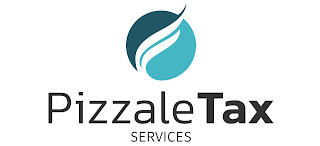Filing taxes
can seem like a daunting task, but with a bit of preparation and understanding,
you can navigate your way through the process of preparing your 1040 tax return
with ease. The 1040 form is the standard federal income tax form used to report
an individual's gross income. This guide will walk you through the essentials
of Individual (1040) tax preparation, helping you
avoid common pitfalls and ensuring you make the most of available deductions
and credits.
1. Gather
Your Documents
The first
step in preparing your 1040 tax return is to gather all the necessary
documents. These typically include:
- W-2
Forms: Provided by your employer, these forms
detail your earnings and the taxes withheld throughout the year.
- 1099
Forms: These forms report various types of
income you may have received, such as freelance work (1099-NEC), interest
(1099-INT), dividends (1099-DIV), and miscellaneous income (1099-MISC).
- Other
Income Documents: This includes any other sources of income,
such as rental income, alimony, or unemployment benefits.
- Deduction
and Credit Documentation: Gather records of deductible
expenses, such as mortgage interest (Form 1098), student loan interest,
medical expenses, and charitable contributions. Additionally, gather
documentation for any tax credits you may qualify for, like education
credits or the Child Tax Credit.
2. Choose the
Correct Form
There are
several versions of the 1040 form, including:
- Form
1040: The standard form used by most taxpayers.
- Form
1040-SR: Designed for seniors, with larger print
and a standardized deduction chart.
- Form
1040-NR: For nonresident aliens.
- Form
1040X: For amended tax returns if you need to
correct a previously filed return.
Most
taxpayers will use the standard Form 1040.
3. Fill Out
Personal Information
On the 1040
form, fill out your personal information, including your name, address, and
Social Security number. If you're filing jointly with a spouse, include their
information as well. Indicate your filing status (single, married filing
jointly, married filing separately, head of household, or qualifying
widow(er)).
4. Report
Your Income
Next, report
all sources of income. This includes wages, salaries, tips, taxable interest,
ordinary dividends, capital gains, and other income. Be thorough and accurate,
as discrepancies can lead to audits or penalties.
5.
Adjustments to Income
Adjustments
to income can help lower your taxable income. Common adjustments include
contributions to a traditional IRA, student loan interest, and educator
expenses. These adjustments are reported on Schedule 1 and then transferred to
your Form 1040.
6. Calculate
Your Adjusted Gross Income (AGI)
Your Adjusted
Gross Income (AGI) is your total income minus any adjustments. AGI is a crucial
number, as it determines your eligibility for certain deductions and credits.
7. Claim
Deductions
You can
choose to take the standard deduction or itemize your deductions. The standard
deduction amount varies based on your filing status:
- Single:
$13,850
- Married
Filing Jointly: $27,700
- Head
of Household: $20,800
Itemizing
deductions can be beneficial if your deductible expenses exceed the standard
deduction. Common itemized deductions include medical expenses, state and local
taxes, mortgage interest, and charitable contributions.
8. Apply Tax
Credits
Tax credits
can directly reduce the amount of tax you owe. Some common credits include:
- Earned
Income Tax Credit (EITC): For low-to-moderate-income
working individuals and families.
- Child
Tax Credit: For taxpayers with qualifying children.
- Education
Credits: Such as the American Opportunity Credit
and the Lifetime Learning Credit.
9. Calculate
Your Tax
Using the IRS
tax tables or tax software, calculate the amount of tax you owe based on your
taxable income. Enter this amount on your Form 1040.
10. Apply
Payments and Other Credits
Subtract any
tax payments you’ve already made, such as withholding from your W-2 forms and
estimated tax payments. Also, subtract any refundable credits you’re eligible
for.
11. Determine
Your Refund or Amount Owed
If your total
tax payments and credits exceed your tax liability, you’ll receive a refund. If
not, you’ll owe the difference. Enter the appropriate amount on your Form 1040.
12. Sign and
File Your Return
Finally, sign
your return and include any necessary forms and schedules. You can file your
return electronically using IRS e-file or mail it to the appropriate IRS
address.
Tips for a
Smooth Tax Filing Experience
- Double-Check
Your Information: Ensure all names, Social Security
numbers, and figures are correct.
- Keep
Copies: Retain copies of your tax return and all
supporting documents.
- Consider
Professional Help: If your tax situation is complex, hiring
a tax professional can save you time and ensure accuracy.
By following
these steps and staying organized, you can confidently prepare your 1040 tax
return and take advantage of all the deductions and credits available to you.
Happy filing!
https://akter-portfolio-online.mn.co/posts/63860251?utm_source=manual





No comments:
Post a Comment